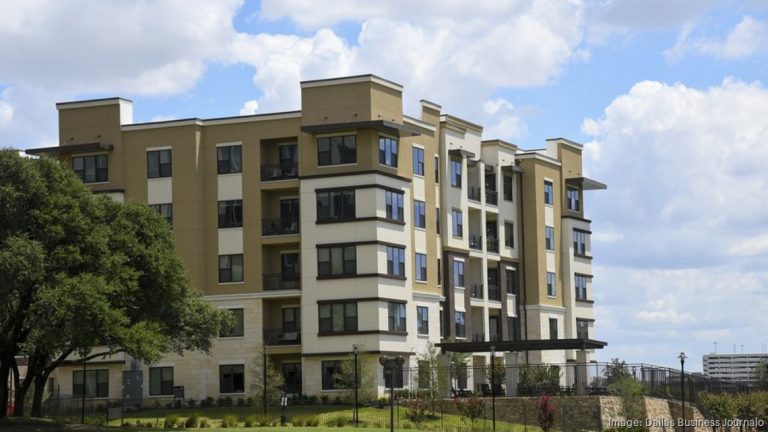More than 5,000 apartment move-ins were recorded in the first quarter, making it the busiest first quarter since 2019.
Dallas — Read this article and more North Texas business news from our partners at Dallas Business Journal.
Demand for Dallas-Fort Worth apartments has been higher than normal during the first few months of the year after a long period of declining monthly rents, but the good deals for renters may be coming to an end.
Just over 5,000 apartment move-ins occurred in the first quarter, making 2021 the exception as pent-up demand and relocations overheated the apartment market, making it the busiest first quarter since 2019, according to a new analysis by researchers at CoStar Group.
According to the firm’s research, asking rents in the region rose slightly month-over-month for the first four months of 2024, marking the first increase since June 2023. Rents have fallen for six consecutive months in the second half of 2023, coming as a relief to renters after prices had soared at double-digit rates in the years prior to that.
Dallas-Fort Worth ranks second only to New York City in apartment demand over the past year, with about 19,000 units filled in both cities, according to CoStar.
“we [the second quarter]”We expect that gap to close and Dallas-Fort Worth to move into the top spot,” said Bill Kitchens, a CoStar real estate analyst in Dallas-Fort Worth.
Kitchens attributes the surge in demand to easing inflation and improving consumer confidence over the past year, as well as concessions and special measures from landlords competing for tenants.
Kitchens said three fast-growing suburban submarkets — Frisco-Prosper, Allen-McKinney and North Fort Worth — accounted for a third of market demand over the past year and have been stabilizing factors for the market, but Frisco-Prosper is currently seeing the steepest rent declines in the market.
Kitchens said demand has fallen the most from low- and moderate-income households, adding that rent growth is also slowing in areas that aren’t saturated with new communities that create competition and drive down rents.
“We’re starting to see a downturn in mid-priced properties,” Kitchens said. “We haven’t seen anything like this since the financial crisis.”
A separate study by Institutional Property Advisors, a division of Marcus & Millichap, showed leasing trends similar to those seen by CoStar. The firm’s research showed that first-quarter leasing activity in the first three months of the year hit a record high, with net absorption reaching 7,000 in Dallas-Fort Worth and 100,000 nationwide.
Data sources vary depending on whether you consider new apartment units when a property opens or add them over time as they become available.
“Healthy job creation and robust migration are key factors supporting local housing demand,” said Greg Willett, first vice president of research services at Institutional Property Advisors. “Rental housing typically represents a large portion of overall housing demand because the premium for purchasing versus renting is at an all-time high.”
While rent growth remains negative on an annual basis, down 1.4% over the past year, prices are still sky-high compared to pre-pandemic levels. Monthly asking rent in the DFW area is currently averaging $1,528, $1,343 for a one-bedroom apartment and $1,719 for a two-bedroom, according to CoStar data.
Real estate data companies predict that DFW rents will continue to rise through the end of the year as demand picks up during the busy spring season, with CoStar predicting rents will remain flat on an annual basis before rising about 3% annually from next year onwards.
Rents could rise further if the region’s rapid pace of apartment construction slows. RealPage chief economist Carl Whitaker expects apartment supply to peak at around 38,000 by the end of this year or early next year, according to the Dallas Morning News.

